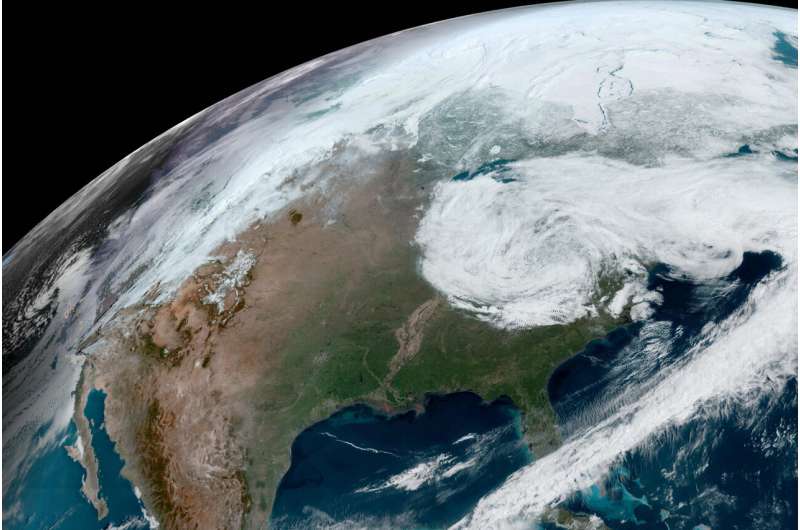As of Friday afternoon, the Northeastern U.S. looks like it has the best chance of clear skies, along with large patch of the central U.S. near southeastern Missouri and southern Illinois.
Canada, too, may have only light cloud cover that won't significantly impact the view, according to National Weather Service meteorologist Marc Chenard. Higher, thinner clouds should still allow eclipse goers to glimpse the sun, while lower, thicker clouds could obscure the spectacle entirely.
Parts of Ohio, Pennsylvania, New York and Texas are questionable. Northeast Texas, Chenard says, "could kind of go either way at this point." Mexico may also have low to mid-level cloud cover.
Thushari Jayasekara, a physics professor at Southern Illinois University, saw the 2017 eclipse from Carbondale, Illinois, where it was partially hidden by clouds. From her vantage point at the university's Saluki Stadium, the spectacle disappeared right as the final bit of the sun was extinguished by the moon. The crowd fell silent.
"It was dark, but we were not able to see the sun," she said. The clouds parted again during totality, allowing those in Carbondale to catch a glimpse of the full effect.
Storms with severe weather potential after the eclipse from Texas to Arkansas could impact homeward travel.
How accurate is the eclipse weather forecast?
"The uncertainty is still pretty high," Chenard said. The storms moving across the country make it difficult for meteorologists to predict exactly where and when clouds will arrive.
Weather conditions in the northeast U.S. have looked promising so far, but the timing and speed of Monday's storms may influence what cloud cover looks like for the rest of the country.
The National Oceanic and Atmospheric Administration's Weather Prediction Center will update the eclipse forecast daily until Monday.
Eclipse enthusiasts should monitor weather forecasts over the weekend and keep plans flexible. Daniel Dawson, an atmospheric scientist at Purdue University, drove to Carbondale for the 2017 eclipse with his family—then changed plans day-of and drove east to Kentucky based on the cloud forecast.
"Look for where the confidence seems to be the greatest as you head towards the event," he said.
How can I see the solar eclipse if it's cloudy or rained out?
Eclipse viewers can still watch the total solar eclipse online.
Associated Press journalists will also bring live coverage of the eclipse from across the path, starting at 10 a.m. EDT with views from Mazatlán, Mexico, and other locations.
NASA will stream telescope views of the sun and on NASA TV starting at 1 p.m. EDT.
The Exploratorium museum, Time and Date and Slooh will also broadcast eclipse day views.
© 2024 The Associated Press. All rights reserved. This material may not be published, broadcast, rewritten or redistributed without permission.



